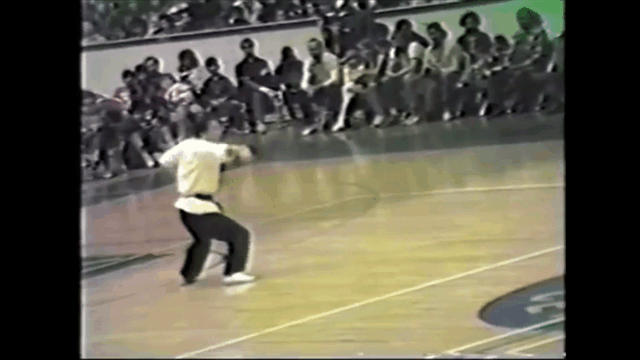- Thread Starter
- #21
That picture isn’t him chambering his hand at his hip…yes it is roughly hip level, but it is in front of his body…that’s not his hikite workshmmmm. I don't think they are being completely honest there. They are too knowledgeable to not know how to use it in a fight. My guess is that he's in marketing mode. He picked something that most people think is useless and then showed how they train. My guess is that if they are still doing Kata in the school, that they are chambering the fist. Some people get stuck on the arm chambering low without really understanding the full range of things you can do with the arm pulling back.
Here's him chambering the punch at the hip. Lyoto first threw his right and then quickly pulled his hand back. This does 2 basic thing. The first is that it allows you to send your second punch punch out ASAP. The other thing is that it doesn't give your opponent time to seize your arm because you are pulling it out of danger. This would be the most basic concept
View attachment 30367
Lyotomay have simply determine that it's easier to teach people to pull their arm back in a high guard first, becasue that is easier for beginners to grasp vs being less flexible with techniques thinking that the hand always has to return to the hip. Maybe the application of chambering at the hip is an advanced technique. Similar to how beginner boxers learn how to keep their hands up but when they hit an advance level, the learn how to safely have their hands down. Who knows?


